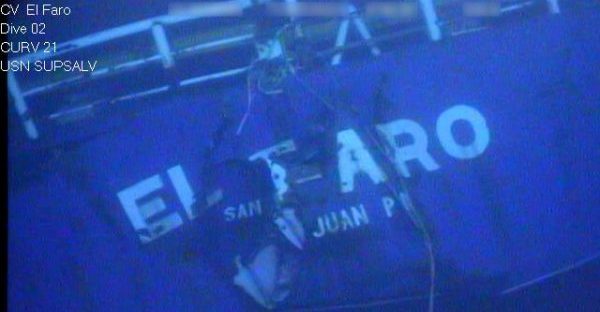The US Coast Guard released its Final Action Memo regarding the 2015 S.S. El Faro sinking, which resulted in the loss of its entire crew. In the Final Action Memo, USCG approves the findings of fact, analysis, and conclusions detailed in the Marine Board of Investigation’s Report of Investigation.
Following Adm. Paul Zukunft’s review of the ROI and comments received from Parties in Interest and families of the crew, he concluded that the main cause of the casualty was the decision to navigate El Faro too close to the path of Hurricane Joaquin.
Other factors also contributed in the accident, such as:
- An ineffective safety management system within the operating company, TOTE Services Incorporated.
- American Bureau of Shipping’s failure to uncover or otherwise resolve longstanding deficiencies that adversely affected the safety and seaworthiness of vessels on multiple occasions.
- Failure of the USCG to adequately oversee the third party in this case. The investigation also reveals that the Coast Guard has not sustained the proficiency and policy framework to do so in general.
In the Final Action Memo, Adm. Zukunft directs final agency actions that USCG will need to take in response to the Board’s recommendations. These measure can be summarized as following:
- New flag state guidance to improve the development, implementation, and verification of Safety Management Systems;
- Changes/updates/improvements to Coast Guard management of the Alternate Compliance Program and accountability of Authorized Classification Societies;
- Advanced Coast Guard marine inspector training that includes alternate inspection programs, auditing principles and other contemporary topics;
- Guidance to mariner training institutions to provide training in advanced meteorology topics;
- Regulatory actions related to high water alarms and periodic vessel deadweight surveys;
- Engagement at IMO to provide flooding detection in cargo holds of new and existing multi-hold cargo ships;Discussions with NOAA regarding improvements to its maritime weather forecasting products;
- Working with the Coast Guard’s Response Directorate to institute Search and Rescue related equipment changes.
“The Coast Guard takes the implementation of these safety improvements very seriously. First and foremost, every operator must commit to safety by embracing their responsibilities under the ISM Code. Secondly, Recognized Organizations must fully and effectively perform their duties and responsibilities. Finally, the Coast Guard, must, and will, provide the final safety net with effective and sustainable policy, oversight, and accountability,” USCG said in an announcement.
El Faro’s sinking was the deadliest shipping disaster involving a US-flagged vessel in more than 30 years. The 790-foot, cargo vessel, S.S. El Faro, en route from Jacksonville, Florida, to San Juan, Puerto Rico, sank on 1 October 2015, in the Atlantic Ocean during Hurricane Joaquin, taking the lives of all 33 aboard.
Recently, the National Transportation Safety Board announced that it was caused by a captain’s failure to avoid sailing into a hurricane, despite numerous opportunities to route a course away from hazardous weather.
Below you can see the full Final Memo on the El Faro sinking, as released by the USCG































































